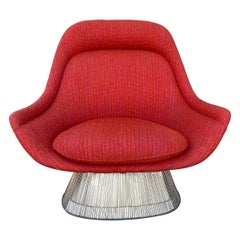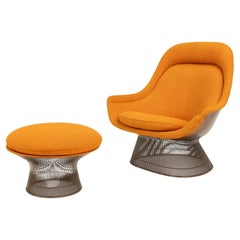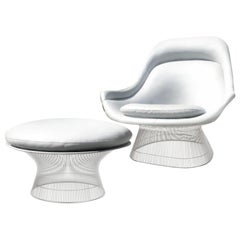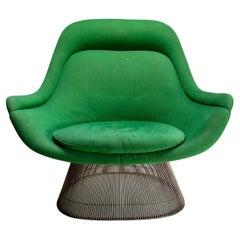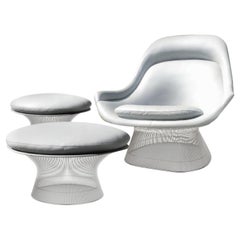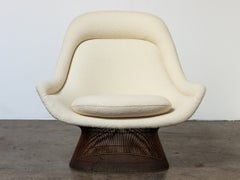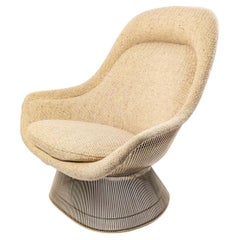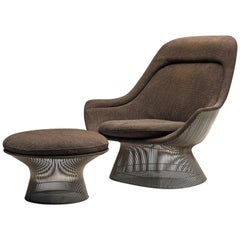Warren Platner Model 1705
Vintage 1970s American Mid-Century Modern Lounge Chairs
Nickel
Vintage 1960s American Mid-Century Modern Lounge Chairs
Nickel
Mid-20th Century American Mid-Century Modern Lounge Chairs
Stainless Steel, Nickel
Vintage 1960s American Mid-Century Modern Armchairs
Steel
Mid-20th Century American Mid-Century Modern Lounge Chairs
Stainless Steel, Nickel
20th Century Mid-Century Modern Lounge Chairs
Steel
Recent Sales
Vintage 1970s American Armchairs
Metal
20th Century American Mid-Century Modern Lounge Chairs
Steel
Vintage 1960s American Mid-Century Modern Lounge Chairs
Steel
Vintage 1970s American Mid-Century Modern Lounge Chairs
Steel, Nickel
Vintage 1970s American Mid-Century Modern Lounge Chairs
Nickel, Steel
Vintage 1970s American Mid-Century Modern Lounge Chairs
Steel
Mid-20th Century American Mid-Century Modern Lounge Chairs
Steel
People Also Browsed
2010s Australian Ottomans and Poufs
Sheepskin
2010s Abstract Abstract Prints
Paper, Screen
2010s South African Minimalist Pedestals
Lacquer, Glass
2010s Turkish Arts and Crafts Tables
Marble
21st Century and Contemporary Italian Mid-Century Modern Chandeliers and...
Glass, Opaline Glass
Antique Late 19th Century French Belle Époque Chairs
Fabric, Giltwood
2010s Italian Classical Roman Console Tables
Concrete
Antique Mid-19th Century English High Victorian Taxidermy
Other
Vintage 1960s Italian Mid-Century Modern Shelves
Wood
Antique Late 18th Century Italian Renaissance Dining Room Sets
Glass, Pine, Walnut
Mid-20th Century Italian Mid-Century Modern Coffee and Cocktail Tables
Mirror
Vintage 1960s American Mid-Century Modern Swivel Chairs
Velvet, Wood
Vintage 1970s North American Stools
Stainless Steel
Late 20th Century French Mid-Century Modern Armchairs
Iron
Mid-20th Century Unknown Egyptian Revival Jewelry Boxes
Marble
Vintage 1950s Italian Mid-Century Modern Chandeliers and Pendants
Crystal, Brass, Chrome
Warren Platner Model 1705 For Sale on 1stDibs
How Much is a Warren Platner Model 1705?
Warren Platner for sale on 1stDibs
Though vintage Warren Platner chairs, sofas and interiors are icons of mid-century modernism, the architect and furniture designer took his stylistic inspiration from as far back as 18th-century France, once saying about his seminal collection for Knoll that his design intent was to evoke “the kind of decorative, gentle, graceful kind of design that appeared in period style like Louis XV.”
Indeed, the marriage of modern sensibility and classical grace is a marker of Platner’s style across furnishings and interiors — both genres in which he left an enduring legacy.
Born in 1919 in Baltimore, Maryland, Platner studied architecture at Cornell before cutting his teeth working for design icons like Eero Saarinen and Kevin Roche, eventually serving as head of interior design in the latter’s office. In 1965, Platner opened his own office, in Greenwich, Connecticut, where he continued to hone his particular brand of graceful modernism.
Knoll released the Platner Collection of seating and tables in 1966. (Originally designed in 1962, the suite took nearly four years of development to bring to life.)
The decorative bent-metal-and-glass pieces — an armchair, a dining table and more — make certain nods to the trademarks of his former employers, but also to the shapes of historic European furniture. The sculptural elegance of his line recalls Saarinen’s iconic Tulip collection, which includes armchairs and dining tables, while his materiality aligns with Roche’s cutting-edge use of glass and metal for the headquarters of the Ford Foundation in New York.
Many of Platner’s Knoll pieces would go on to find homes in a certain fabled locale: the Windows on the World restaurant at the original World Trade Center, whose interiors Platner was tapped to outfit in the mid-1970s. Upon the opening of the restaurant in 1976, New York Times architecture critic Paul Goldberger dubbed its style “sensuous modernism” — an apt tagline for Platner’s oeuvre as a whole.
Platner died in 2006 at the age of 86. His furniture is still produced by Knoll, and original examples — along with idiosyncratic custom works he created for interior design clients — are coveted by collectors today.
Find vintage Warren Platner furniture on 1stDibs.
A Close Look at Mid-century-modern Furniture
Organically shaped, clean-lined and elegantly simple are three terms that well describe vintage mid-century modern furniture. The style, which emerged primarily in the years following World War II, is characterized by pieces that were conceived and made in an energetic, optimistic spirit by creators who believed that good design was an essential part of good living.
ORIGINS OF MID-CENTURY MODERN FURNITURE DESIGN
- Emerged during the mid-20th century
- Informed by European modernism, Bauhaus, International style, Scandinavian modernism and Frank Lloyd Wright’s architecture
- A heyday of innovation in postwar America
- Experimentation with new ideas, new materials and new forms flourished in Scandinavia, Italy, the former Czechoslovakia and elsewhere in Europe
CHARACTERISTICS OF MID-CENTURY MODERN FURNITURE DESIGN
- Simplicity, organic forms, clean lines
- A blend of neutral and bold Pop art colors
- Use of natural and man-made materials — alluring woods such as teak, rosewood and oak; steel, fiberglass and molded plywood
- Light-filled spaces with colorful upholstery
- Glass walls and an emphasis on the outdoors
- Promotion of functionality
MID-CENTURY MODERN FURNITURE DESIGNERS TO KNOW
- Charles and Ray Eames
- Eero Saarinen
- Milo Baughman
- Florence Knoll
- Harry Bertoia
- Isamu Noguchi
- George Nelson
- Danish modernists Hans Wegner and Arne Jacobsen, whose emphasis on natural materials and craftsmanship influenced American designers and vice versa
ICONIC MID-CENTURY MODERN FURNITURE DESIGNS
- Eames lounge chair
- Nelson daybed
- Florence Knoll sofa
- Egg chair
- Womb chair
- Noguchi coffee table
- Barcelona chair
VINTAGE MID-CENTURY MODERN FURNITURE ON 1STDIBS
The mid-century modern era saw leagues of postwar American architects and designers animated by new ideas and new technology. The lean, functionalist International-style architecture of Le Corbusier and Bauhaus eminences Ludwig Mies van der Rohe and Walter Gropius had been promoted in the United States during the 1930s by Philip Johnson and others. New building techniques, such as “post-and-beam” construction, allowed the International-style schemes to be realized on a small scale in open-plan houses with long walls of glass.
Materials developed for wartime use became available for domestic goods and were incorporated into mid-century modern furniture designs. Charles and Ray Eames and Eero Saarinen, who had experimented extensively with molded plywood, eagerly embraced fiberglass for pieces such as the La Chaise and the Womb chair, respectively.
Architect, writer and designer George Nelson created with his team shades for the Bubble lamp using a new translucent polymer skin and, as design director at Herman Miller, recruited the Eameses, Alexander Girard and others for projects at the legendary Michigan furniture manufacturer.
Harry Bertoia and Isamu Noguchi devised chairs and tables built of wire mesh and wire struts. Materials were repurposed too: The Danish-born designer Jens Risom created a line of chairs using surplus parachute straps for webbed seats and backrests.
The Risom lounge chair was among the first pieces of furniture commissioned and produced by celebrated manufacturer Knoll, a chief influencer in the rise of modern design in the United States, thanks to the work of Florence Knoll, the pioneering architect and designer who made the firm a leader in its field. The seating that Knoll created for office spaces — as well as pieces designed by Florence initially for commercial clients — soon became desirable for the home.
As the demand for casual, uncluttered furnishings grew, more mid-century furniture designers caught the spirit.
Classically oriented creators such as Edward Wormley, house designer for Dunbar Inc., offered such pieces as the sinuous Listen to Me chaise; the British expatriate T.H. Robsjohn-Gibbings switched gears, creating items such as the tiered, biomorphic Mesa table. There were Young Turks such as Paul McCobb, who designed holistic groups of sleek, blond wood furniture, and Milo Baughman, who espoused a West Coast aesthetic in minimalist teak dining tables and lushly upholstered chairs and sofas with angular steel frames.
Generations turn over, and mid-century modern remains arguably the most popular style going. As the collection of vintage mid-century modern chairs, dressers, coffee tables and other furniture for the living room, dining room, bedroom and elsewhere on 1stDibs demonstrates, this period saw one of the most delightful and dramatic flowerings of creativity in design history.
Finding the Right Lounge-chairs for You
While this specific seating is known to all for its comfort and familiar form, the history of how your favorite antique or vintage lounge chair came to be is slightly more ambiguous.
Although there are rare armchairs dating back as far as the 17th century, some believe that the origins of the first official “lounge chair” are tied to Hungarian modernist designer-architect Marcel Breuer. Sure, Breuer wasn’t exactly reinventing the wheel when he introduced the Wassily lounge chair in 1925, but his seat was indeed revolutionary for its integration of bent tubular steel.
Officially, a lounge chair is simply defined as a “comfortable armchair,” which allows for the shape and material of the furnishings to be extremely diverse. Whether or not chaise longues make the cut for this category is a matter of frequent debate.
The Eames lounge chair, on the other hand, has come to define somewhat of a universal perception of what a lounge chair can be. Introduced in 1956, the Eames lounger (and its partner in cozy, the ottoman) quickly became staples in television shows, prestigious office buildings and sumptuous living rooms. Venerable American mid-century modern designers Charles and Ray Eames intended for it to be the peak of luxury, which they knew meant taking furniture to the next level of style and comfort. Their chair inspired many modern interpretations of the lounge — as well as numerous copies.
On 1stDibs, find a broad range of unique lounge chairs that includes everything from antique Victorian-era seating to vintage mid-century modern lounge chairs by craftspersons such as Hans Wegner to contemporary choices from today’s innovative designers.
